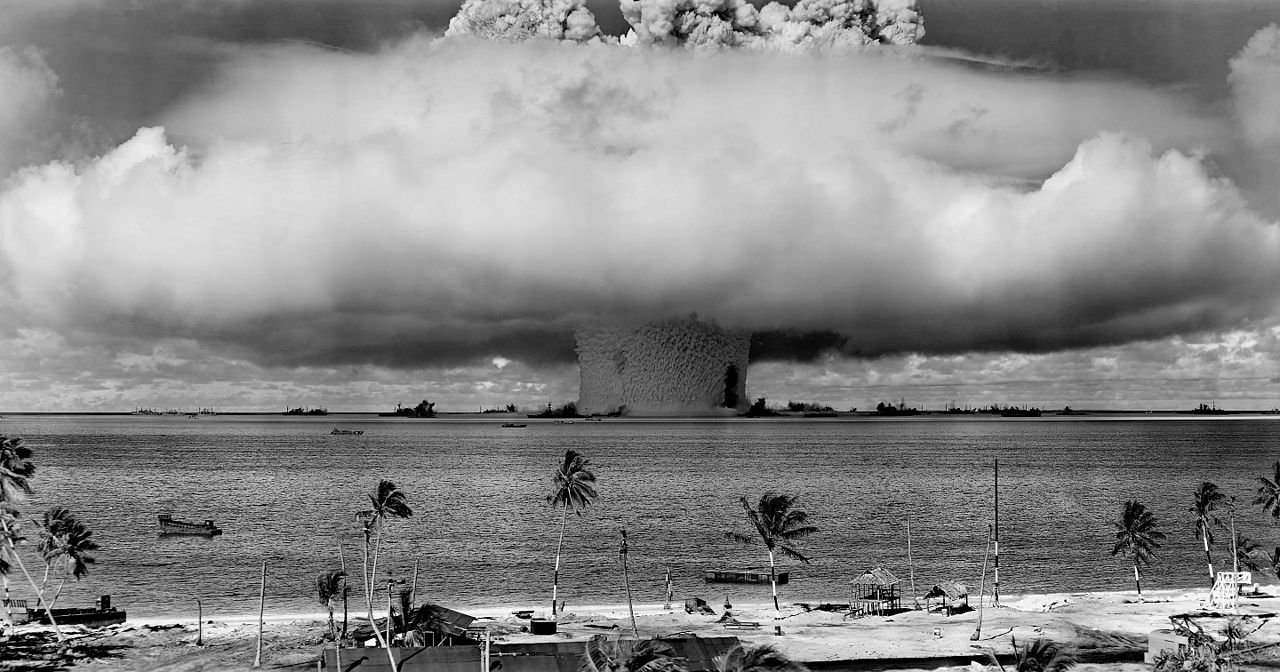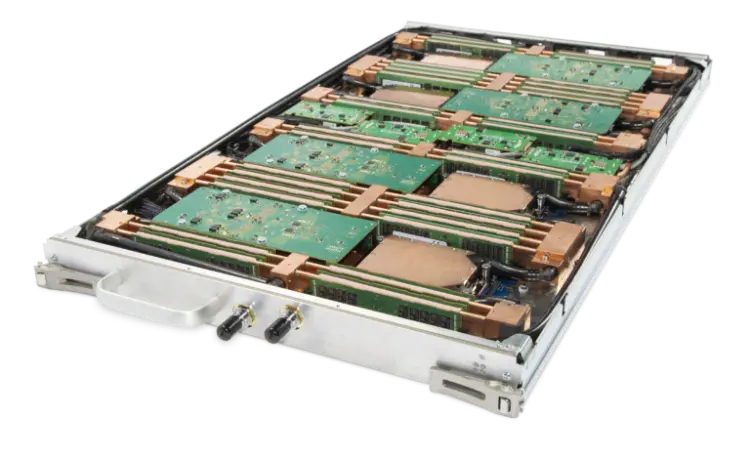
The US Department of Energy (DoE) has committed to building the world’s most powerful supercomputer yet, it revealed today.
The new DoE supercomputer, “El Capitan”, will have a peak performance of over 1.5 exaflops, or 1.5 quintillion calculations per second.
It will go into production by late-2023 and be used to run simulations of nuclear weapon explosions “in the absence of underground testing.”
The system will provide “scientists and weapon designers the computational tools to explore the use of new materials and components, improve robustness and safety, reduce maintenance costs and reduce manufacturing and production costs”.
 The DoE said that this will help it run 3D simulations that address nuclear weapon aging issues, for which its researchers have no nuclear test data.
The DoE said that this will help it run 3D simulations that address nuclear weapon aging issues, for which its researchers have no nuclear test data.
The system will have a “heterogeneous Central Processing Unit (CPU)/Graphical Processing Unit (GPU) architecture”, contract winner Cray said. (Processor components at the node level are yet to be determined, the company added).
It won’t be just bombs though: the capabilities will also benefit areas of basic science beyond nuclear security, “such as cancer research, optimising design for additive manufacturing, climate, seismology and astrophysics.”
Contract Worth $600 Million
The system’s firepower will make it more powerful than the top 100 faster supercomputers in the world combined.
Laid end-to-end, El Capitan’s compute blades would be more than three times taller than its titular peak in the Yosemite range, or over three kilometres high, supercomputer specialist Cray said, announcing the contract today.

Loss-making Cray, recently acquired by HPE for $1.3 billion, will be building the system, with the total contract award valued at a chunky $600 million.
(HPE, buying Cray, said in May that it sees a $5 billion exascale computing opportunity in the next five years alone).
El Capitan’s, World’s Fastest Supercomputer, Will Handle National Nuclear Security Applications
Based on Cray’s new Shasta architecture, El Capitan is projected to run national nuclear security applications at more than 50 times the speed of Lawrence Livermore National Laboratory (LLNL)’s Sequoia system. Depending on the application, El Capitan will run roughly 10 times faster on average than LLNL’s Sierra system, currently the world’s second most powerful supercomputer at 125 petaflops of peak performance.
El Capitan will be DOE’s third exascale-class supercomputer, following Argonne National Laboratory’s “Aurora” and Oak Ridge National Laboratory’s “Frontier” system. All three DOE exascale supercomputers will be built by Cray using its Shasta architecture, Slingshot interconnect and a new software platform.
New Cray Software Platform
The system will use a new software platform developer by Cray and also revealed today.
This aims to bring the “modularity, composability and ease-of-use of cloud computing” to supercomputers.
Cray said that, among other benefits, it extends traditional HPC batch workflow scheduling for modeling and simulation with Kubernetes container orchestration.
It also creates an “open supercomputing platform” by including standardised and supported APIs (the company did not provide specific details) for integration, data access and software ecosystem extensibility and interoperability.
This will allow users to “compose converged modeling, simulation, analytics and AI workflows using modern microservices and a robust suite of tools and compilers that support a broad spectrum of processors and accelerators,” Cray said.
“Applications can easily move from laptop to supercomputer for maximum scalability of code with minimal refactoring.”

“The Department of Energy is the world leader in supercomputing and El Capitan is a critical addition to our next-generation systems,” said U.S. Energy Secretary Rick Perry.
He added: “El Capitan’s advanced capabilities for modeling, simulation and artificial intelligence will help push America’s competitive edge in energy and national security, allow us to ask tougher questions, solve greater challenges and develop better solutions for generations to come.”

“NNSA is modernizing the Nuclear Security Enterprise to face 21st-century threats,” said Lisa E. Gordon-Hagerty, DOE under secretary for Nuclear Security and NNSA administrator. “El Capitan will allow us to be more responsive, innovative and forward-thinking when it comes to maintaining a nuclear deterrent that is second to none in a rapidly-evolving threat environment.”
Cray said: “The Shasta hardware and software architecture can accommodate a variety of processors and accelerators, making it possible for Cray and LLNL to work together in the coming months to finalize the decision on which processor and GPU components will be used at the node level to maximize performance.”
“We are honored to be a part of this historic moment to deliver the next U.S. exascale supercomputing system to the DOE, NNSA and LLNL in support of their incredibly important mission,” said Pete Ungaro, president and CEO of Cray.






